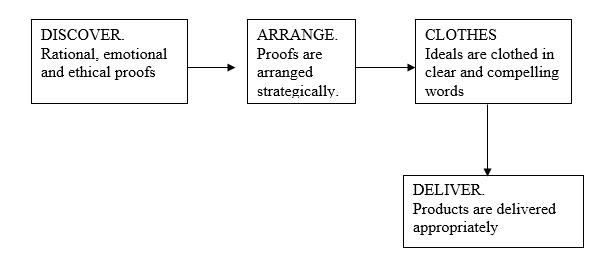Wondering what the disadvantages and advantages of linear model of communication are? Then, check out our essay sample to find out more about this and other communication models!
Communication models are mainly pictures; this is because they can put to an end very essential interactive or transitive process into a static picture.
There are quite a number of communication models. Some of them include:
- Classical communication models.
- Early linear models.
- Non linear models.
In classical communication method, it deals with rhetoric which is a definition of communication that originated from a Greek philosopher (Mortensen, Sereno 1970)
Rhetoric basally deals with observation to provide a persuading answer
Aristotle’s model of communication follows a chain of communication method.

So it follows arrangement:
Investor → Arrangement → Style → Deliver → Memory.
Aristotle’s model of proof deals with Aristotle’s description of proof which inheres the message, audience, and, finally, the speaker.
So it follows a chain:
Source → speaker → auditor.
In Bitzers, the Rhetorical situation identifies some classical components of the communication situation.
Advantages of Aristotle model:
- It provides both general and particular vantage points.
- It gives space to ask questions and to interpret raw staff of observation.
- It can lead us to new discoveries by following its trend.
- It gives order and coherence to complex events.
Disadvantages:
- It leads to over simplicity of events.
Early linear models
One of these models is Shannon-weaver mathematical model. This model was invented to give a solution to engineers in finding ways of transmitting electrical signals to other locations. This model connects transmitted and received signals. It followed the following trend.

Advantages:
- It can be used in low-level communication texts.
- It has led to significant developments.
- Its an approximation of all the processes of human communication
- It has a great heuristic value.
- Its concepts are used in communication research.
Disadvantages:
- It’s not analogous to various ways of human communication.
- It’s basically formal and does not account for content.
- This model does not differentiate important ideas from those which are not.
The other method in the early linear model is Berlo’s S-M-C-R which is the most influential message-centered model. It follows the trend of:
Source → message → channel → receiver.
Advantages:
- Ideas can be presented flexibly.
- The message stressed the transmission of ideas.
Disadvantages:
- It stresses manipulation to a machine
- It converts humans into a machine
- It stresses the problems of human communication
- Even with the right symbol, it can lead to misunderstanding.
Another method in early linear communication is Schranmm’s model of communication.
This transmitted message is as follows.

Advantages:
- It provided a framework of references
- It availed feedback
- It included context, such as the message
- It included culture.
Disadvantages:
- It’s less linear and accounts only for bilateral communication.
Non-linear model
This model depicts communication as a dynamic process. This model presents the helical model of communication.
Advantages of the helical model:
- It exemplifies earlier points.
- It makes communication continuous, unrepeatable, addictive, and accumulative.
Disadvantages of the helical model:
- It has too few variables.
- Provides unanswered questions.
Another sub-model of non linear model is Wesley and MacLean’s conceptual model.
It starts with one specific item, and as it advances, it selects further items for coding, which are then transmitted to another person.
Advantages:
- It gives feedback.
- Account for sensory fields.
- It shows non-binary interactions.
- It shows different modes of communication.
Disadvantage:
- This method cannot account for multiple dimensions of communication. The other non linear model is Beaker’s mosaic model, which links messages for more than one social situation (Barnlund, 1968).
Advantages of Backer’s mosaic model:
- It has incredible communication complexity.
- It accounts for variations in exposure to messages.
- It helps to conceive interaction between two mosaics.
Disadvantages:
- It does not account for possible dimensions involved in communication.
Therefore, the best model of communication is the early linear model since it has a variety of sub-models that are quite advantageous and reliable.
Reference
Mortensen, C.D, Sereno, K. K, (1970), Foundation of Communication Theory, Harper and Row: New York.
Barnlund, D. C, (1968) Interpersonal Communication, Houghton Muffin, Boston.